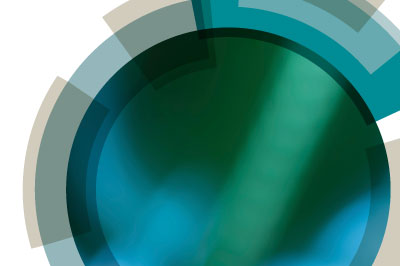Mediated enzyme reactions form the basis of many applications, ranging from biosensors, through biocatalytic fuel cells, to applications in industrial electro-synthesis.1 This presentation will briefly review some of our efforts to date on redox mediation of enzyme reactions for such applications. Immobilisation of the enzyme in a redox mediating hydrogel yields reagentless biosensors, as monitoring of mediated reduction currents for a range of substrates, present in solution, permits detection of any modulator of enzyme activity. Furthermore, co-immobilization of a redox mediator and an affinity recognition element, such as DNA or antibody, provides a generic platform for the amplified detection of complementary affinity partners (DNA or antigen) that are labelled with redox enzymes.Our studies on oxygen biosensors demonstrated, also, that copper oxidases co-immobilized in redox hydrogels can reduce oxygen at relatively high potentials and current densities, suggesting possible applications as cathodes in implantable biofuel cells when combined to oxidation of a fuel, such as glucose, at the anode. Covalent coupling of enzymes and mediators on electrode surfaces, particularly structured surfaces, can appreciably improve the fuel cell stability and output. Similarly, biofilms of electro-active bacteria (EAB) in microbial electrochemical cells (MECs) can facilitate proficient organic carbon removal from wastewater while producing biological renewable energy in the form of electricity. Our research examines cyclic voltammetric behaviour of EAB under various growth conditions to assess the efficiency of such films in MECs. The approach adopted examines the role of an applied controlled-potential to enhancing biofilm electrochemical catalytic activity compared with the behaviour of control biofilms using both single-culture studies (Geobacter sulfurreducens) and mixed-culture studies on model fuel/wastes, and on wastes sourced from municipal and slaughterhouse waste-streams, as well as fuels derived from second-generation biofuel crops. We also present how EAB biofilms immobilised at electrodes may be utilised in emerging electrochemical carbon capture and utilisation technologies.
RSC Analytical Division Northern Ireland Local Section Lecture
4 October 2017 16:00-17:00, Belfast, United Kingdom
School of Chemistry and Chemical Engineering, Queen's University Belfast
David Keir Building, Room 01.028, School of Chemistry and Chemical Engineering, Queen's University Belfast, Stranmillis Road, Belfast, BT9 5AG, United Kingdom
Search
Advertisement
Spotlight









